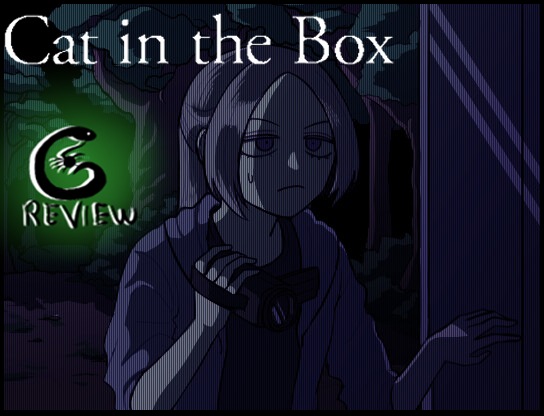Cat In The Box – Recensione
Buona Vigilia di Natale, e buon lockdown per chi se la passa a casa!
Dato che la protagonista di Cat In The Box, invece, è potuta uscire da casa sua (seppur il gioco sia di quest’anno…) ha deciso, per fare la splendida nel suo canale… Youtube? Dailymotion? Nicovideo? Di esplorare la casa che giorni prima apparteneva ad una setta.
Volete saperne di più sulla trama? PaoGun ha già parlato dello storytelling di questo gioco nel secondo articolo del Tin Coffee Pot Time: “Storytelling – Tre modi alternativi per raccontare una storia”!
Io, Ele, mi occuperò principalmente di parlare delle meccaniche e del gameplay in generale di questo titolo, per cui abbiamo deciso di dedicare questo articolo specifico.
Gameplay – Elementi survival ed inseguimenti divini
In generale Cat In The Box è davvero piacevole da giocare, le fasi di esplorazione non sono mai noiose e, per fortuna, si trovano costantemente i nastri per la nostra videocamera, così che il giocatore non imprechi solo per salvare la partita e non perdere ore e ore di gioco, così come la cioccolata per non far addormentare il giocatore sulla tastiera per la velocità iniziale della protagonista.
Come avrete già notato dal titolo e da cosa ha detto PaoGun, Cat In The Box è un RPG Horror molto più “occidentale” rispetto a molti che siamo tutti abituati a vedere, seppur la ragazza protagonista sia disegnata in uno stile più o meno anime.
Ma andiamo nel dettaglio, partiamo dalle fasi di esplorazione. Perché ho scritto che è un prodotto che sembra di stampo molto occidentale rispetto ad altri del genere?
Perché, secondo me, il gameplay di Cat In The Box pende sul fronte del survival, tipico sottogenere del gioco horror che si produce tipicamente da noi, rispetto all’RPG Horror tipico giapponese a cui siamo stati tutti abituati.
Il primo elemento che lo rende differente sono gli oggetti limitati per salvare e correre…
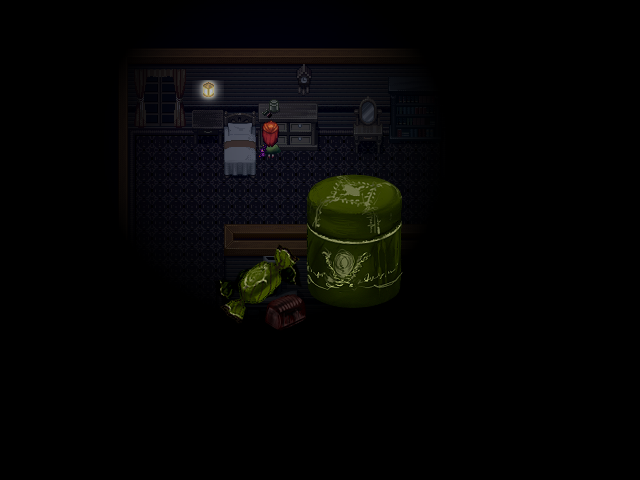
Si, ragazzi, so benissimo che Faust Alptraum anche ha la cioccolata per farti correre, stavo spiegando-
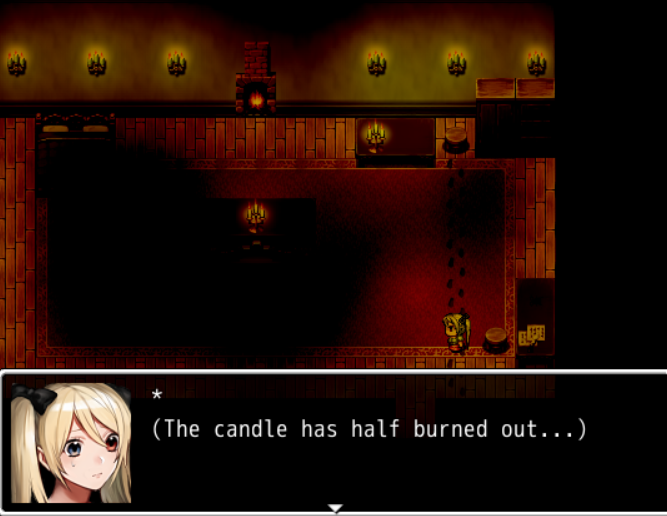
Si, conosco anch’io CaNDLE e il suo sistema della candela ansiogeno!
Mio Dio, fatemi spiegare…
Metteremo proprio a confronto questi due titoli con Cat In The Box.
I primi due, o per via di una cattiva disposizione degli oggetti (in CaNDLE non puoi finire il gioco se non prendi le prime tre candele che si trovano all’inizio) o semplicemente per la meccanica in generale, creano un’ansia costante nel giocatore che dovrà costantemente controllare il livello della candela di Ca o l’energia di Elisabeth.
Ora, non parlerò del come poteva essere fatto meglio questo sistema nel dettaglio, ma dico solo che in entrambi i giochi quest’ansia dell’avere un game over vero e proprio da un momento all’altro per via degli oggetti limitati… Rende entrambi i titoli semplicemente più ansiosi e con giocatori più propensi al ragequit, se mi permetto di esagerare. Questo è perché mettono la situazione sempre “sul filo di un rasoio”, soprattutto CaNDLE (vorrei precisare che Faust Alptraum soffre molto meno di questo problema rispetto a CaNDLE, avendo un posizionamento degli oggetti indispensabili discreto).
Quindi Cat In The Box cosa ha fatto?
Si è semplicemente reso maestro di questo sistema, dando come oggetti limitati la velocità e la possibilità di salvataggio. È stata una scelta intelligente, onestamente, perché non ci si ritrova nel ritmo perenne in cui rischi di avere un game over in ogni secondo e bisogna controllare costantemente dei livelli di qualcosa, senza goderti nulla del titolo, che ha anche delle belle atmosfere.
Ma l’effetto di ansia è papabile lo stesso, dato che viene limitata una cosa vitale come il salvataggio. Quindi il giocatore non si ritrova oppresso dalla meccanica, ma si ritrova una vera e propria sfida… Come dovrebbe essere.
Se non ci si gestisce bene l’uso dei nastri, sei costretto a continuare a giocare finchè non ne trovi un altro (il che non è mai troppo tardi, avendo il gioco una buona disposizione degli oggetti). L’esperienza non viene dagli avvertimenti che successivamente ti danno un game over di botto, bensì dalle conseguenze se non gestisci bene la situazione in cui sei.
E questo, per me, lo rende più “survival” degli altri due titoli che ho citato. Il survival si basa perennemente sul gestire la propria situazione attuale, avendo conseguenze certo scomode, ma che non ti fanno finire la partita istantaneamente…
Come può fare un inseguimento contro, probabilmente, una versione di te stessa da un’altra linea temporale.
Ecco, siamo arrivati al secondo punto di questo paragrafo della recensione.
Come diceva il titolo, ho adorato gli inseguimenti in questo gioco.
A livello più tecnico, il fatto che il gioco ci da una stamina limitata aggiunge molto, dato che non potremo sempre andare sempre e comunque full-speed, quindi se non abbiamo rimedi per la stamina (molto rari, io ne avrò trovato uno durante la mia giocata) dobbiamo imparare a dosare bene la velocità… Ma dato che gli inseguimenti (permettetemi l’assolutismo, seriamente. Ho giocato così tanti giochi inutilmente difficili che queste cose mi rendono esageratamente felice.) sono stati fatti bene, questa cosa non rende il gioco più incline a far salire l’isteria a persone come me, ma semplicemente aggiunge sfida!
Ma oltre a una bellissima giocabilità, la cosa che ho apprezzato di più è, esco dal mio campo, il concept di molti degli inseguimenti, in generale.
Molti sono stati aiutati, a livello di idee, dal fatto che l’antica divinità evocata dalla setta citata nel gioco è la causa di tutto questo loop temporale…


(Quella sopra è più una fase stealth che ho ugualmente apprezzato molto)
Ma soprattutto quelli che hanno a che fare in qualche modo con le copie della protagonista…

…Sono diventati un elemento vincente, dato l’espediente quasi “meta” delle linee temporali.
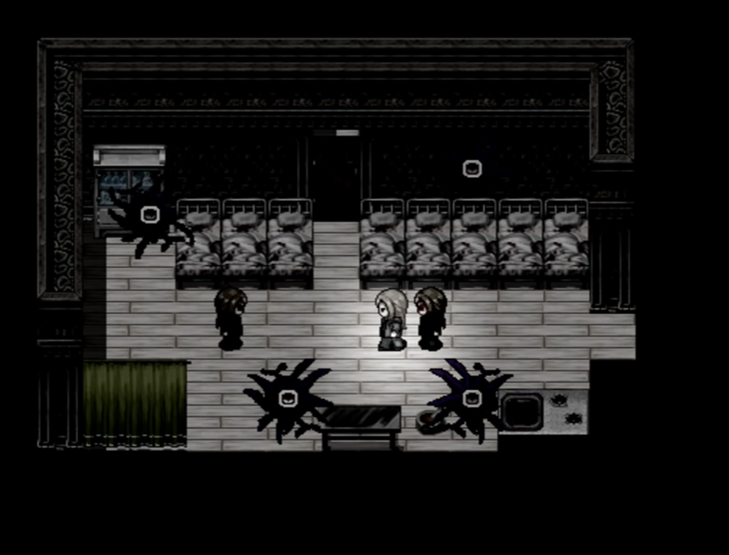
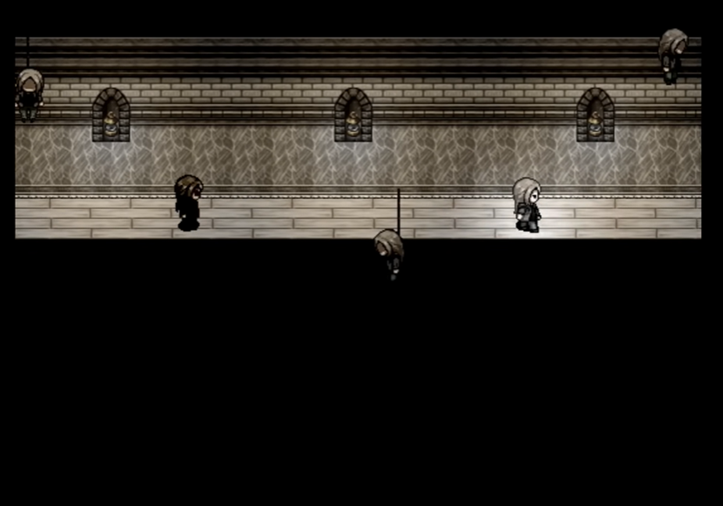
Ma oltre alle belle, inquietanti, mai troppo invasive, mai troppo banali… E che fanno anche foreshadowing sul plot twist principale, visuali in cui facciamo correre la protagonista, molti altri elementi di Cat In The Box si basano sul tema delle anomalie temporali.
Infatti, tornando per qualche secondo sugli inseguimenti, quando si viene catturati succede sempre qualcosa di strano al livello del gioco vero e proprio.
Ecco un esempio.
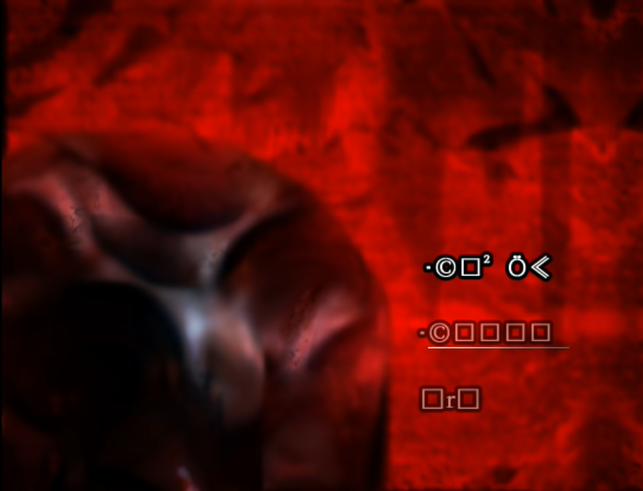
(In realtà questo cambiamento della schermata del titolo avviene anche se si va semplicemente al menu principale tramite il menu di gioco, se si è “fortunati”, ma almeno a me è successo quando sono stata catturata dalla copia della protagonista)
E se si clicca la prima voce… Il gioco non è che si chiude solo, o qualcosa di più semplice… Bensì crasha dopo questa schermata con testo scorrevole.
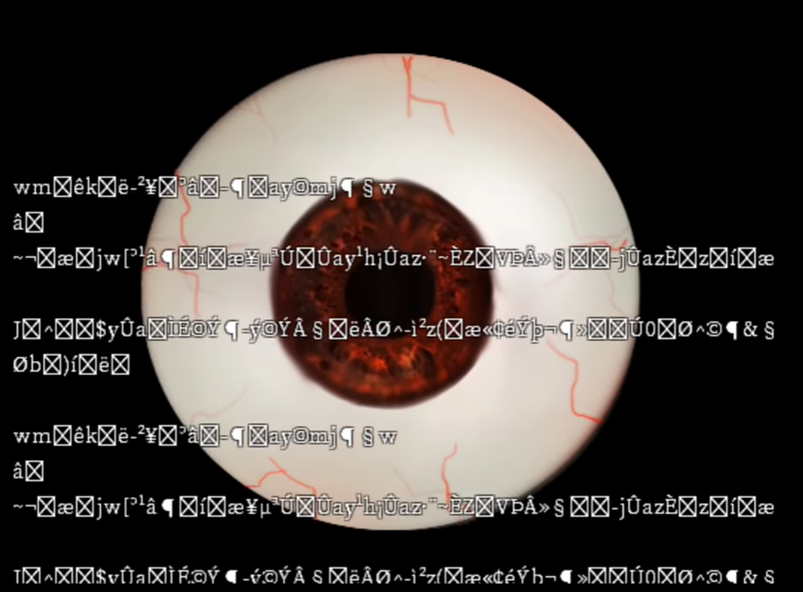
“Un crash obbligato, che figata è?! Cioè non è solo uno ‘SceneManager.exit’*, crasha proprio!!”
–Io appena ho avuto questo game over, visibilmente emozionata.
*chiamata script usata su RPG Maker VX Ace per chiudere direttamente il gioco
Da qui apriamo il capitolo che finisce questo spezzone molto entusiasta della recensione: gli easter egg e i segreti.
Questi sono… Semplicemente tantissimi! Davvero, c’è persino un video di un intero minigioco inutilizzato che collega Cat In The Box a Stygian, il gioco precedente a questo, sempre della PsychoFlux Entertainment!

Ma in quest’articolo ve ne lascio un assaggio.
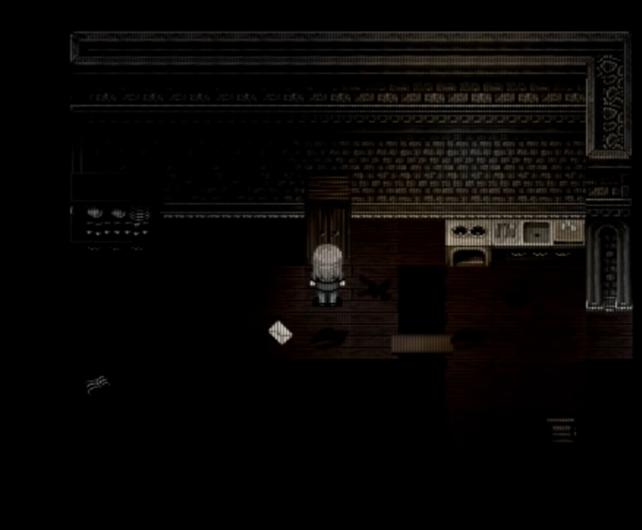
Se controllate quest’armadio quando il primo killer è morto…
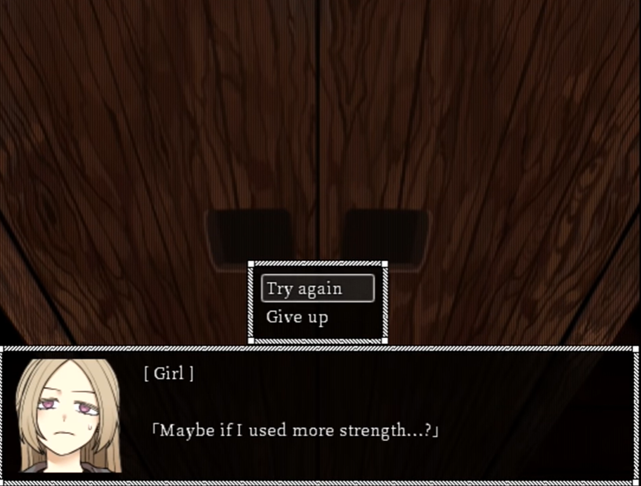
E dopo aver provato ad usare più forza, senza successo…

…Ottenete l’ascia e poi, prima di andare al piano di sopra tornate a questo armadio…

…Hmm, già, perchè ha un nastro per la videocamera e ha i nostri stessi vestiti?

Oh, otterrete un nastro per la videocamera! Che fortuna!
…Ah, questo gioco è bellissimo, non ho davvero dubbi su questo.
Dopo le nostre prime due recensioni cariche d’odio e amarezza (spoiler: ci sarà più odio successivamente, just you wait) e il nostro apprezzamento per Purgatory, abbiamo trovato in un gioco di quest’anno davvero un’altra perla.
Con un inizio da tipico film slasher, con un plot twist che ha attorno degli elementi di foreshadowing a tratti anche incredibili, assieme ad un gameplay ben pensato, equilibrato e mai lasciato all’approssimazione perché “tanto è un RPG Horror” ed un aesthetic quasi occidentale, per noi Cat In The Box rimarrà per lungo tempo un importante punto di riferimento e confronto.

